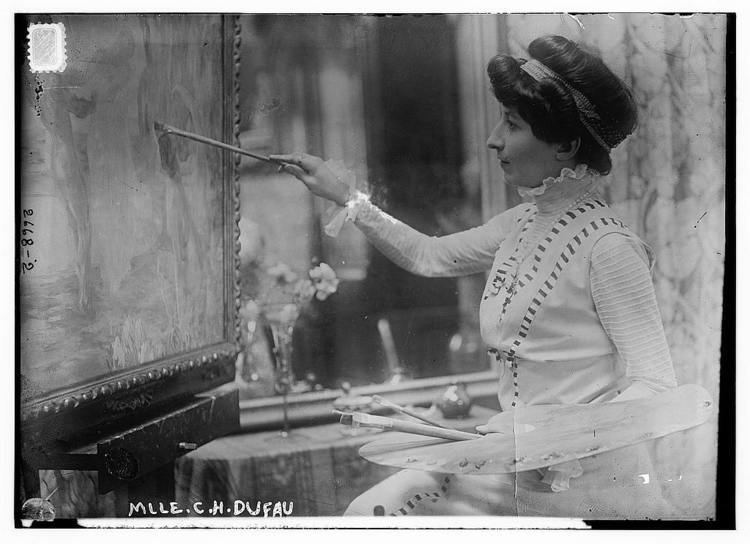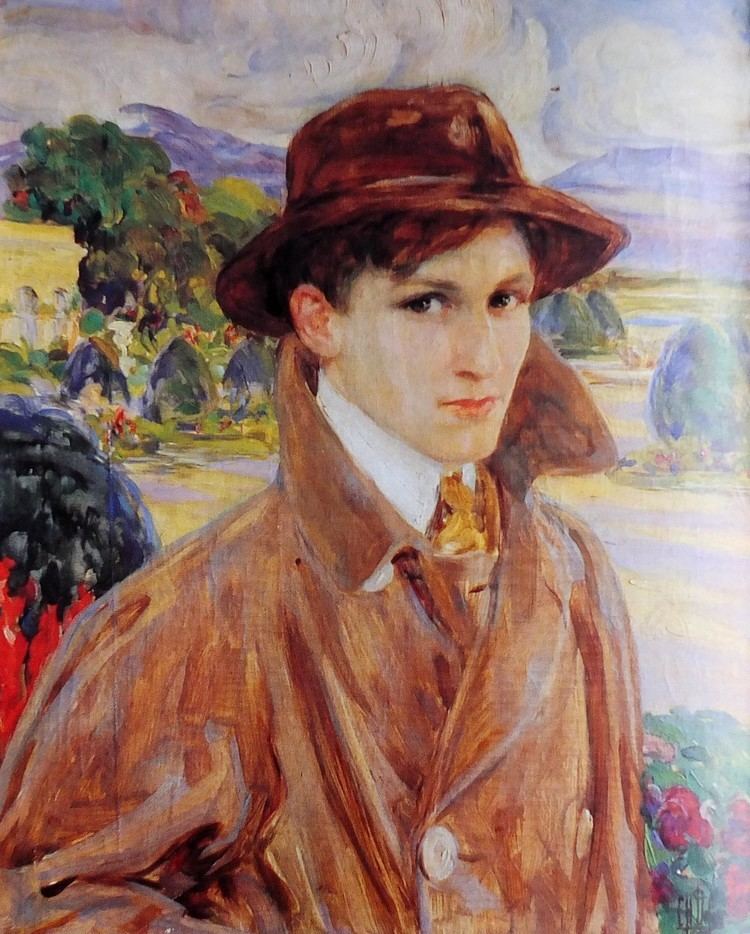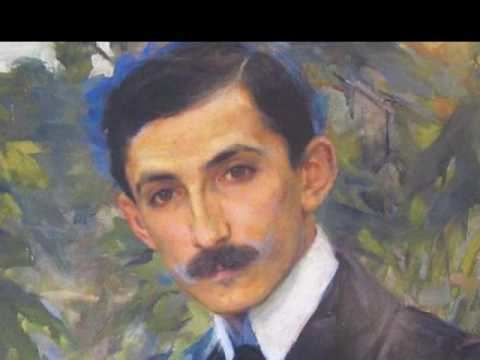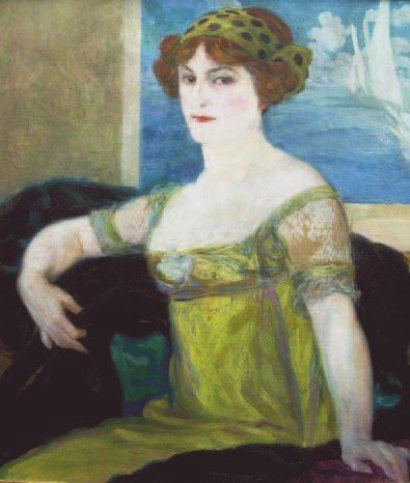Name Clementine Dufau Role Artist | ||
 | ||
Clementine-Hélène Dufau (18 August 1869, Quinsac - 18 March 1937, Paris) was a French painter decorative artist, poster designer and illustrator.

Biography

Her father was an entrepreneur of Basque ancestry who made a fortune during a trip to Cuba and married the daughter of a vineyard owner when he returned. The vineyard, Le Château de Clauzel, is still in business.

She was in poor health as a girl and had to spend many hours in bed, during which she began to draw. After her sisters were all married, she wanted to study art. Her parents decided to sell their interest in the vineyard and moved to Paris with her in 1888.

She enrolled at the Académie Julian; studying with William Bouguereau and Tony Robert-Fleury. In 1895, she exhibited at the Salon des Artistes Français and was awarded a prize for her painting, L'Amour de l'Art. As a result, she began to receive orders for advertising posters, beginning with one for the Bal des Increvables at the Casino de Paris, followed by one to announce the launching of La Fronde, a journal founded by Marguerite Durand in 1897. The following year, she became a member of the Société des Artistes Français and obtained a scholarship to study in Spain.

By 1905, she was a well-established artist; working with Edmond Rostand and decorating his "Villa Arnaga" in Cambo-les-Bains. Her mother's sudden death plunged her into solitude and she developed what she herself described as a mad passion for Edmond's youngest son Maurice, who was still a teenager and openly homosexual. This tormented relationship lasted for several years.
Her career continued to expand. She received a commission from the government for decorations at new additions to the Sorbonne and portraits of numerous personalities. In 1911, she built a villa in Basque Country, but had to sell it in 1926 when her financial situation began to deteriorate. She set up a studio in Antibes, facing the sea. It was later occupied by other artists; notably Nicolas de Staël and the sculptor, Abel Chrétien, both of whom died there.
She became an adept of René Guénon and a passionate admirer of the young Krishnamurti. In 1932, she wrote Les Trois Couleurs de la Lumière, in which she expounded her esoteric vision of art. In addition to Guénon, she was inspired by the theories of the esthetician Charles Henry and the abbé Paul Lacuria (1806-1890), author of "The Harmonies of Being".
She was finally forced to leave Antibes and rent her workshop. She returned to Paris and exhibited at the Salon of the Société des Femmes Artistes Modernes. In 1937, she died of stomach cancer and was buried at the Cimetière parisien de Thiais, in the section for indigents. It is only since the 1990s that her work has been rediscovered.
